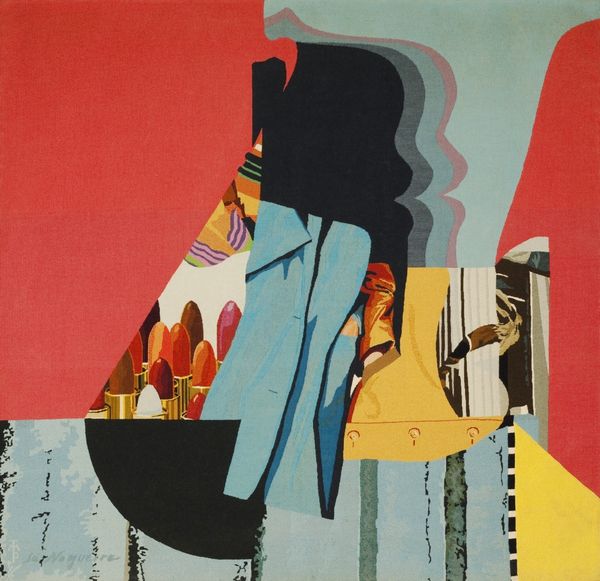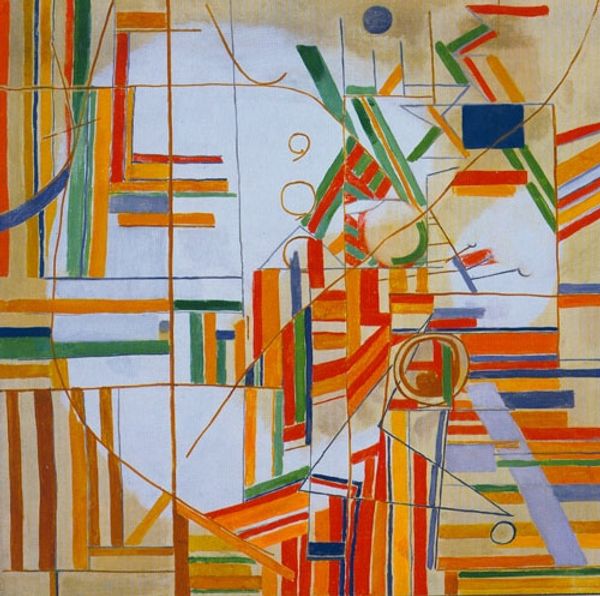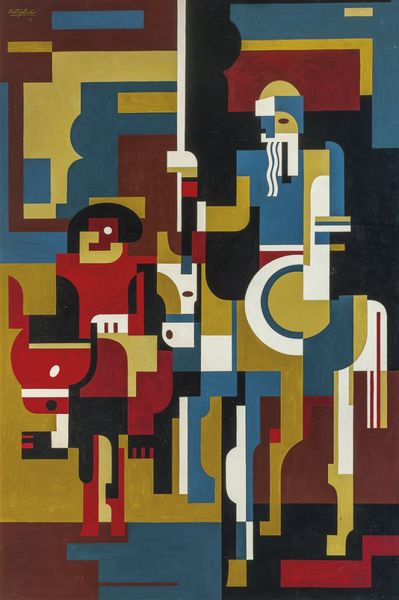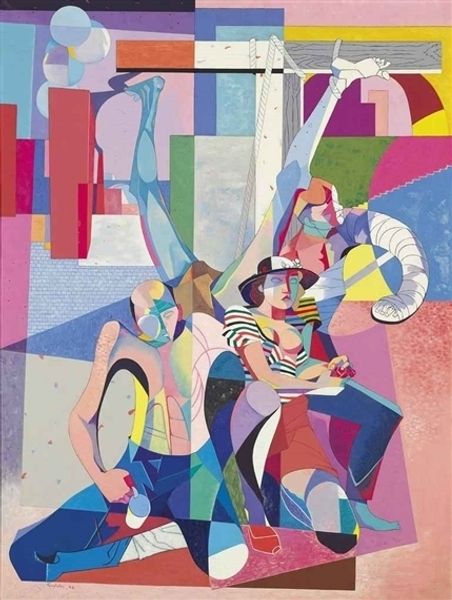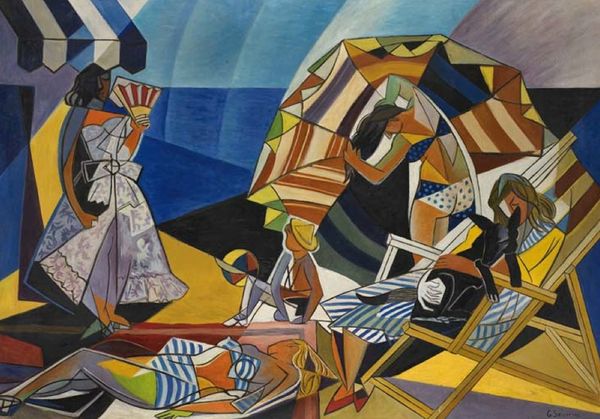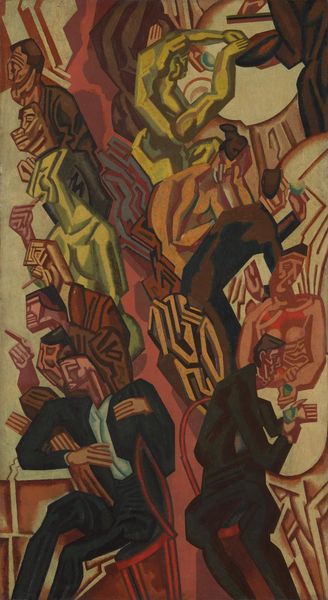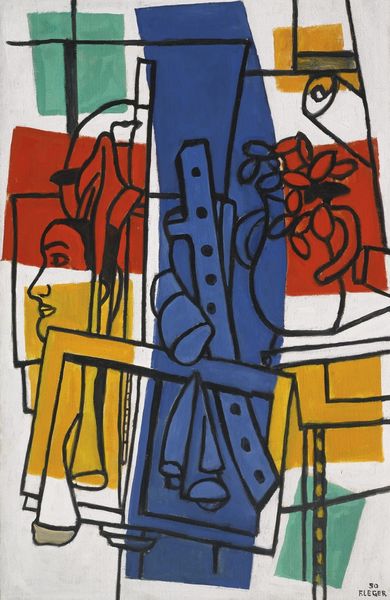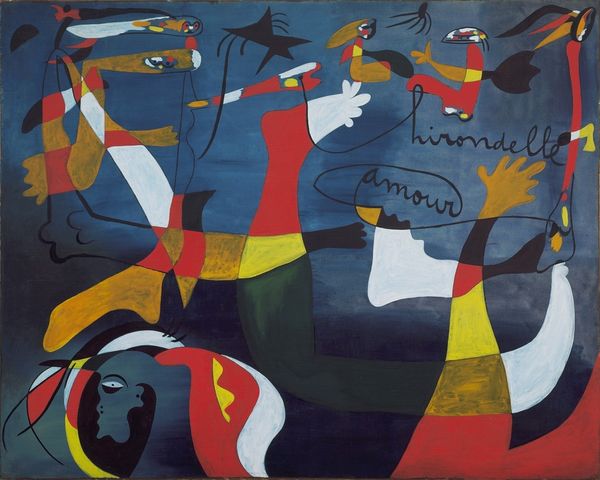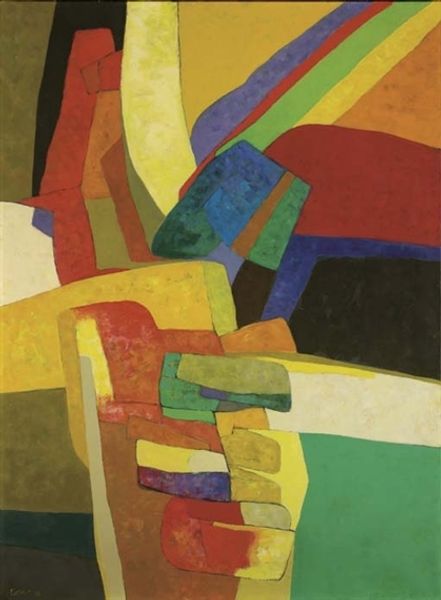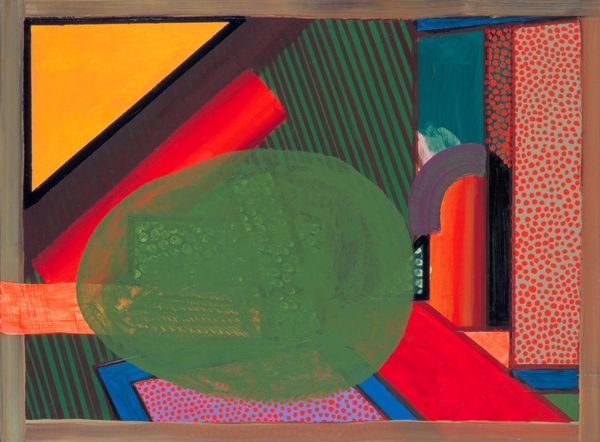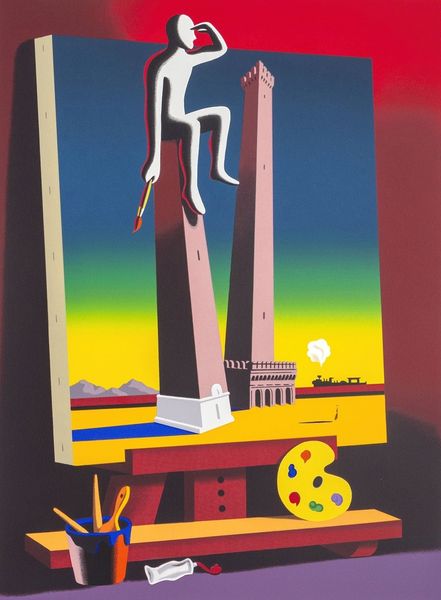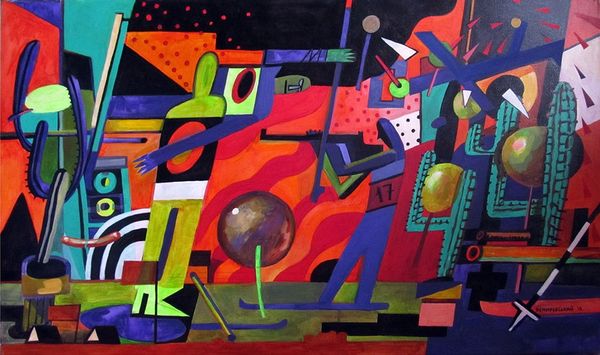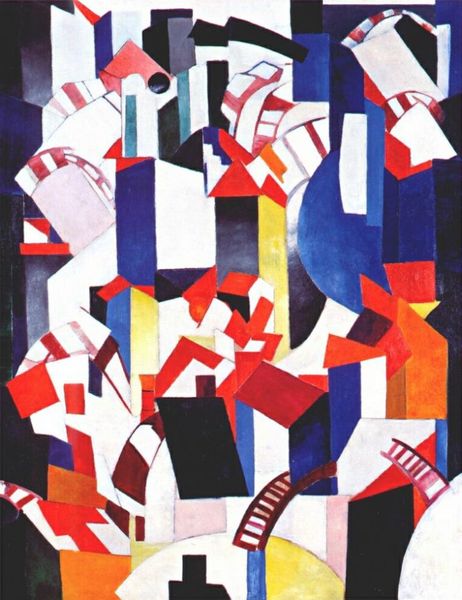
painting, acrylic-paint
#
painting
#
graffiti art
#
pop art
#
acrylic-paint
#
figuration
#
body-art
#
geometric
#
pop-art
#
modernism
Copyright: Antonio Palolo,Fair Use
Curator: This painting is titled "Hórrid o silêncio do teu corpo," or "Horrid the silence of your body." It's an acrylic on canvas work by António Palolo, created in 1966. Editor: Well, immediately, the vibrant colours against the deep black background create this sense of...unsettled energy. It’s almost like looking inside a chaotic machine. Curator: Indeed. Palolo was part of a wave of Portuguese artists engaging with Pop Art in the '60s, a period marked by significant social and political upheaval in Portugal. The canvas almost becomes a site for exploring the anxieties and the censorship present under the Salazar dictatorship. The body as a fragmented landscape—silenced. Editor: I see what you mean. The figure seems to be cut open. The diagrammatic heart and lungs are on display, yet encased by these harsh geometric shapes and almost industrial imagery. I see a political reading, certainly, but also perhaps a statement about the dehumanizing aspects of modernity itself. How the inner self gets suppressed. Curator: The internal made external and monstrous. Considering Palolo's circle engaged actively with international artistic and political movements, including anti-colonial struggles and leftist ideologies, the body’s "silence" might also echo the silencing of marginalized voices and suppressed dissent of the time. Editor: I like the point about silence. Because though the colors scream, the overall feeling for me is of internal processes running without a voice to express the result, almost like the organs become architecture. And that lack of clear voice lends itself very nicely to the discussion of censorship and lost identity. The rigid structures surrounding that exposed anatomy don’t look inviting. They are cold. Curator: Absolutely. By situating this fragmented figure amidst symbols of industrialization and imposing geometric forms, Palolo provides us with a potent visual critique, addressing power dynamics and the human cost. Editor: A reminder that art from any era continues to have a profound dialogue with current socio-political situations and that's what keeps those images present and necessary. Curator: Precisely. Palolo’s exploration continues to urge critical reflection on the many silences that continue to persist around and within us.
Comments
No comments
Be the first to comment and join the conversation on the ultimate creative platform.
